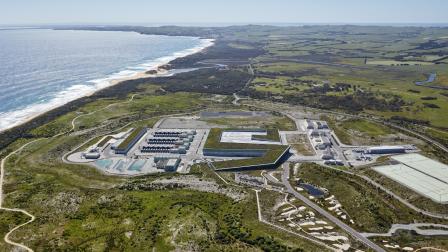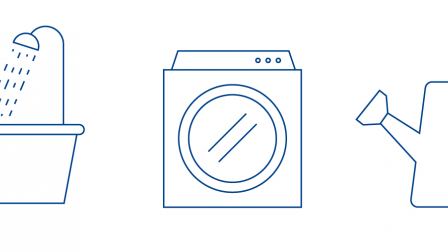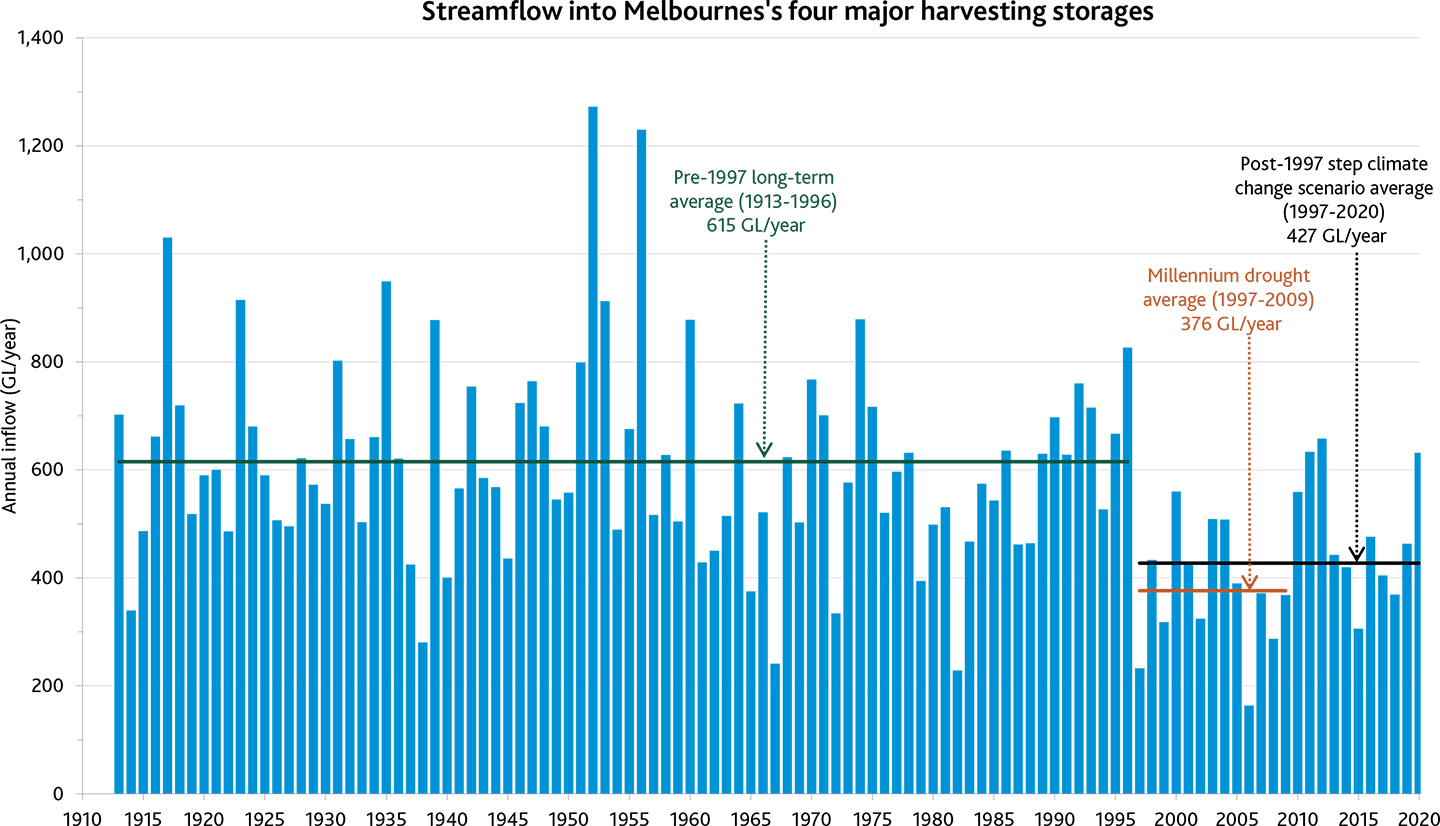Water is essential to our way of life today, tomorrow and for generations to come. We are in the decade that matters when our demand for water could outstrip our supply.
The effects of climate change and hotter and drier weather, the possibility of more severe bushfires and unpredictable storms and floods, less rainfall over time, and the possibility of another drought all have an impact on our water supply. By 2030 nearly 6 million Melburnians will need water every day. That’s why at Melbourne Water, we have been taking action and planning across 50-year time horizons to manage and protect this precious resource for our city. Learn about our water supply challenges and what we're doing about it:
Our population has grown…
Everyone wants to live here! It's a fact that Melbourne’s population has grown substantially in the past twenty years. According to the Australian Bureau of Statistics and the Victorian State Government, Melbourne is the fastest growing city in Australia.
We’ve added 1.4 million new residents since 2001 – and we know that over the next 50 years the population of Melbourne and the surrounding region is expected to grow from 4.6 million to almost 8 million.
Over the same timeframe, Victoria's total population is anticipated to reach over 10 million.
…meaning water use is rising
Personal water saving actions, more efficient home appliances, and better urban design and planning have lowered use per capita. However, more people means more demand on our water supply and, consequently, our water storage levels.
Our recent growth has seen annual water use rise by 10.7% over the last five years.
We have longer drier periods
There is much more to Melbourne's water story as we head toward another dry summer. Alongside our growing city, our climate is now characterised by longer drier periods, greater temperature extremes and more intense storm events. All these factors dry out the land, affect rainfall patterns and reduce how much water makes it into our storages from rainfall.
See the data for yourself below, or watch our video to understand what we call 'The Sponge Effect':
Bushfires increase pressure on water supplies
Hotter, drier conditions also increase the risk of bushfires, placing further pressure on our drinking water supplies. This makes efficiencies in our entire water supply system even more critical.
Did you know that over half of the water supplied to Greater Melbourne is sourced from protected catchments, which are surrounded by natural bushland? That keeps the water cleaner and means less treatment is needed to meet our strict health standards – and is what makes our water taste great! But that bushland is also susceptible to bushfire which can impact water quality and supply, and take reservoirs offline in the short term. That’s why at Melbourne Water we complete annual bushfire preparedness activities, so we’re ready to protect our catchments if a fire does break out.
All of these factors mean that Melbourne’s water supply picture looks different today than it has in the past, and it will continue to evolve.
What are we doing about it?
The water sector works closely together with the State Government to plan for and manage these changes.
Melbourne Water and the water retailers will continue to:
- recycle and reuse more wastewater for things like agriculture and firefighting
- capture and reuse more stormwater for watering our parks and sporting fields
- support the design of a more water-efficient city.
Desalinated water will continue to be a key part of our water supply, and of course all Melburnians have their role to play, continuing to be water wise in our everyday lives.
You may also like...
How we’re taking action
Melbourne’s water corporations are working hard with government and a range of other partners to secure our water supply.

Tips for saving water
Use these tips to save water at home, and make every drop count - and keep your water use under Target 150.

